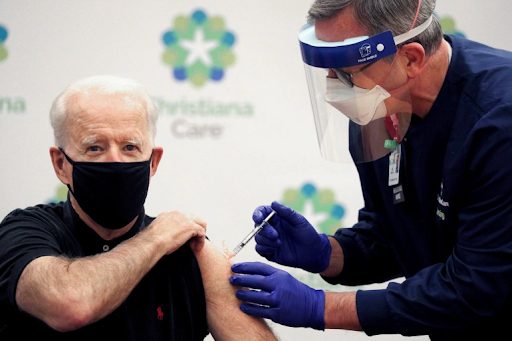Vaccination Go Aheads – Current Policies and Changes

Image Courtesy of Al Jazeera
By Chris Carey
On August 23, 2021, the FDA fully approved the Pfizer-BioNTech COVID-19 for individuals aged 16 and older. Under the emergency authorization, children over the age of 12 are also eligible to receive the vaccine; however, a recent development from the companies promoting the vaccine has led to a conversation over the use of COVID vaccines for those between the ages of 5 and 11.
Throughout the COVID crisis, proper management of schooling, particularly for younger children ineligible for vaccination even under emergency authorization, has caused much division. Many advocate for the indefinite use of masks for school children while others claim that the transmission of the coronavirus among children and the effects of the virus are too minuscule to call for such a stringent proposal.
Still, others push for the authorization of vaccinations, likening them to the chickenpox vaccine, or any of the countless other inoculations given to children on a regular basis. On the other side of that argument, some state that the unknown long-term health effects of the COVID-19 vaccines on a developing body, like that of an eight or nine-year-old, are too volatile or expansive to even take that risk.
One initiative in favor of increasing vaccination rates for school children came from an early August White House memo that stated, “President Biden called on school districts nationwide to host at least one pop-up vaccination clinic … [and] directed pharmacies in the federal pharmacy program to work with school districts and colleges across the country to host vaccination clinics on-site.”
Other sources argue that mandating or even suggesting vaccinations for children is inappropriate as the level of data available may suggest. STAT News reports, “the vaccine side effects … may be a tough sell to children and parents simply because the absolute benefit to kids is very small given the low absolute risk of developing severe Covid-19 or dying from it.”
These conflicting points of view have resulted in different policies from district to district as some schools opt in favor of pushing vaccinations and others shy away from the requirement.
Many in favor of a return to educating young children without masks or vaccines point to Britain. The New York Times reported on September 1 that when dealing with the outbreak of the virus’ Delta variant, “masking was a limited part of the strategy. In fact, for the most part, elementary school students and their teachers did not wear them in classrooms at all.”
Differently from the United States, the virus is contained in school districts in Britain through rapid testing and stringent quarantining for close contacts, similar to how Catholic University is managing the coronavirus pandemic at the college level.
Further, the infection rates were shown to not be significantly greater than the local community at large. This adds fuel to the fire of those calling on the Biden administration and school districts to remove mask mandates and focus on other ways of containing the virus.
At the federal level, vaccine mandates have been in place for a long time in a variety of ways. For example, the members of the Armed Forces require full vaccinations before various dates throughout the late fall and early winter. Additionally, President Biden recently directed businesses with more than 100 employees to vaccinate each employee. This directive has resulted in more pushback from businesses on the grounds of even greater loss of labor in an already struggling labor market.
Finally, the FDA announced authorization for a third booster dose of the vaccine for those who are in at-risk groups on Wednesday, September 22. This is sure to reignite the debates over mandates, be they over vaccinations, masks, capacity requirements, or any of the other precautionary measures put in place intended to slow the spread of the virus.







